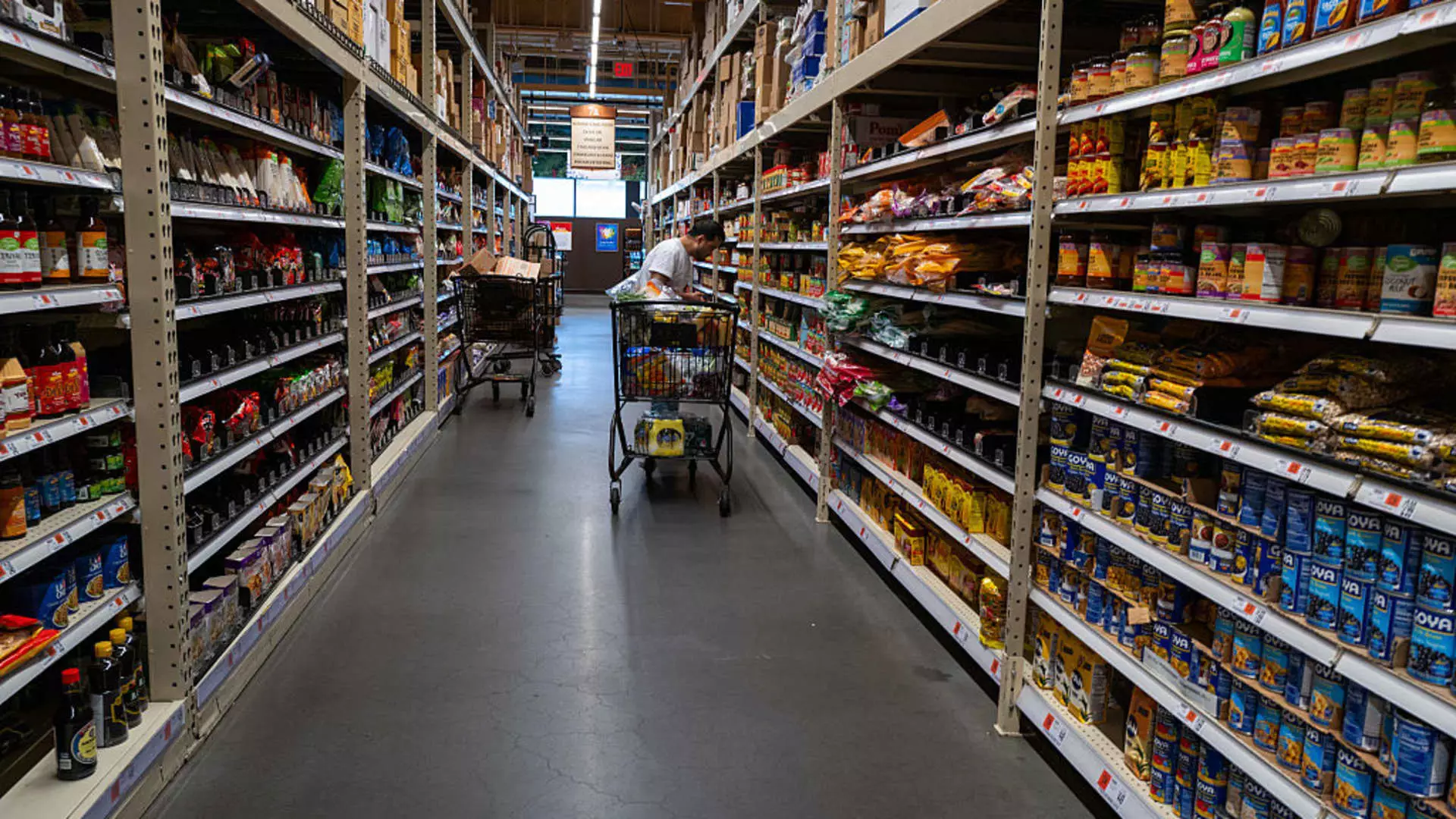In the current economic landscape, April presented a rather uninspiring picture of inflation dynamics, as the Commerce Department reported a mere 0.1% increase in the personal consumption expenditures price index. This index, which serves as the Federal Reserve’s primary measure of inflation, points to an annual rate of 2.1%. At first glance, these figures might give the impression of stabilization, yet delving deeper reveals a narrative rife with concern and uncertainty.
Inflation is often deemed the specter haunted by policymakers—the specter of rising prices that can cripple economic growth and erode consumer confidence. The fact that April’s inflation stats align with Dow Jones forecasts only underscores the fear of complacency; the economic conditions seem to lull us into a false sense of security. It’s important to recognize that the seemingly innocuous core inflation rate, which also registered a 0.1% increase for the month, sits below the Fed’s 2.6% target. The situation suggests that, while inflation may appear under control on paper, the reality on the ground tells a more troubling story.
Consumer Sentiment: A Telling Shift
Even more disconcerting than the inflation rates themselves is the noticeable shift in consumer behavior. Personal consumption growth has sagged to a mere 0.2%—a stark contrast to the more robust 0.7% seen just a month prior. This downturn indicates a considerable apprehension among consumers, a reflection of caution that is echoed in the rising personal savings rate, which has surged to 4.9%. While saving more might generally be seen in a positive light, it also paints a picture of economic trepidation; consumers seem hesitant to part with their cash, convinced that the future may hold more significant financial challenges.
Consider the implications of such a mindset: economic growth thrives on the back of consumer spending. When individuals choose to save rather than spend, the cycle of economic expansion slows. It’s a self-fulfilling prophecy where fear of potential hardship leads to a reduction in spending, which then hampers growth and further fuels consumer anxiety.
Political Maneuvering and Economic Ramifications
Complicating these dynamics is the fact that President Trump has been vigorously pushing for an interest rate cut from the Fed. It’s a move that might seem politically motivated, as he strives to buoy the stock market during his second term. But one must question the wisdom of such intervention when the Federal Reserve is already grappling with the repercussions of aggressive tariffs. Recent reports indicate a consensus within the Fed to refrain from making hasty decisions, as they await to assess how tariffs imposed on imports will ultimately affect the economy.
Trump’s decision to impose widespread 10% tariffs, coupled with his erratic negotiation tactics, is worrisome. The administration’s commitment to adjusting tariffs, despite the recent rule from an international court that has questioned their legality, leaves economists uneasy. The pervasive fear is that these tariffs could lead to higher prices down the line—a form of inflation that either the Fed has not fully acknowledged or is hesitant to act upon in light of potential economic stagnation.
The specter of stagflation looms large as we navigate these complex issues. The historical context tells us that inflation combined with slow economic growth is a toxic mix that can wreak havoc on both personal finances and national prosperity.
Looking Toward the Labor Market and Economic Stability
Both economists and policymakers ought to remain vigilant as they assess the labor market’s condition. Higher prices coupled with a stagnant workforce could lead to dire economic consequences. We have not seen stagflation in the U.S. since the 1980s, yet echoing history can often serve as a cautionary tale. This calls for a nuanced balance between monetary policy and trade regulation to stimulate a healthy economy that supports consumer confidence.
Ultimately, the questions we face aren’t merely about numbers and averages, but about the lived experience of millions of citizens. Amid frequent deliberations in the halls of power and rhetoric centered around trade, it is vital that we keep in mind the fundamental objective: fostering an economy where average consumers feel secure enough to engage, invest, and thrive. If current trends continue without corrective intervention, we may unwittingly find ourselves on the precipice of an economic crisis.

Leave a Reply